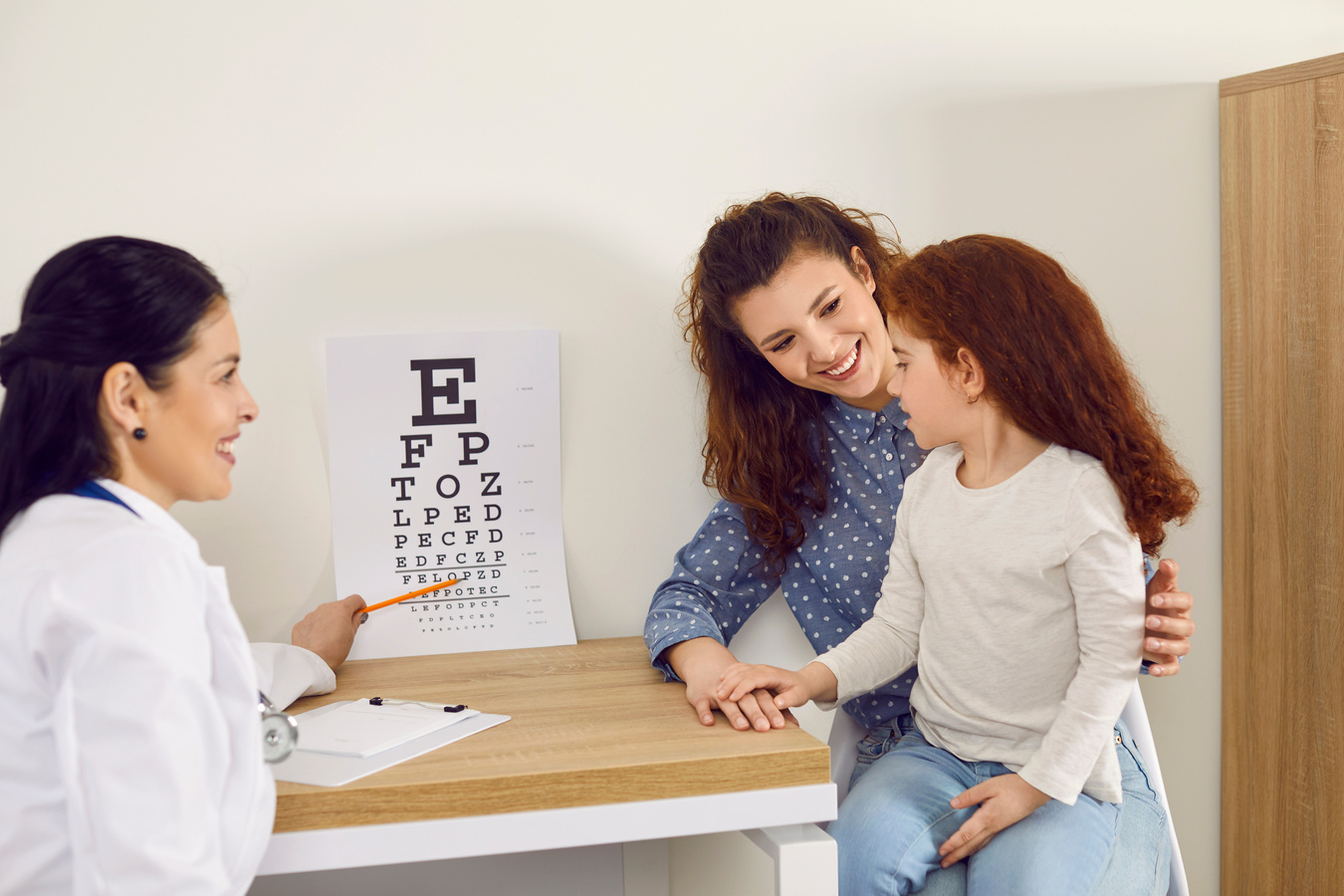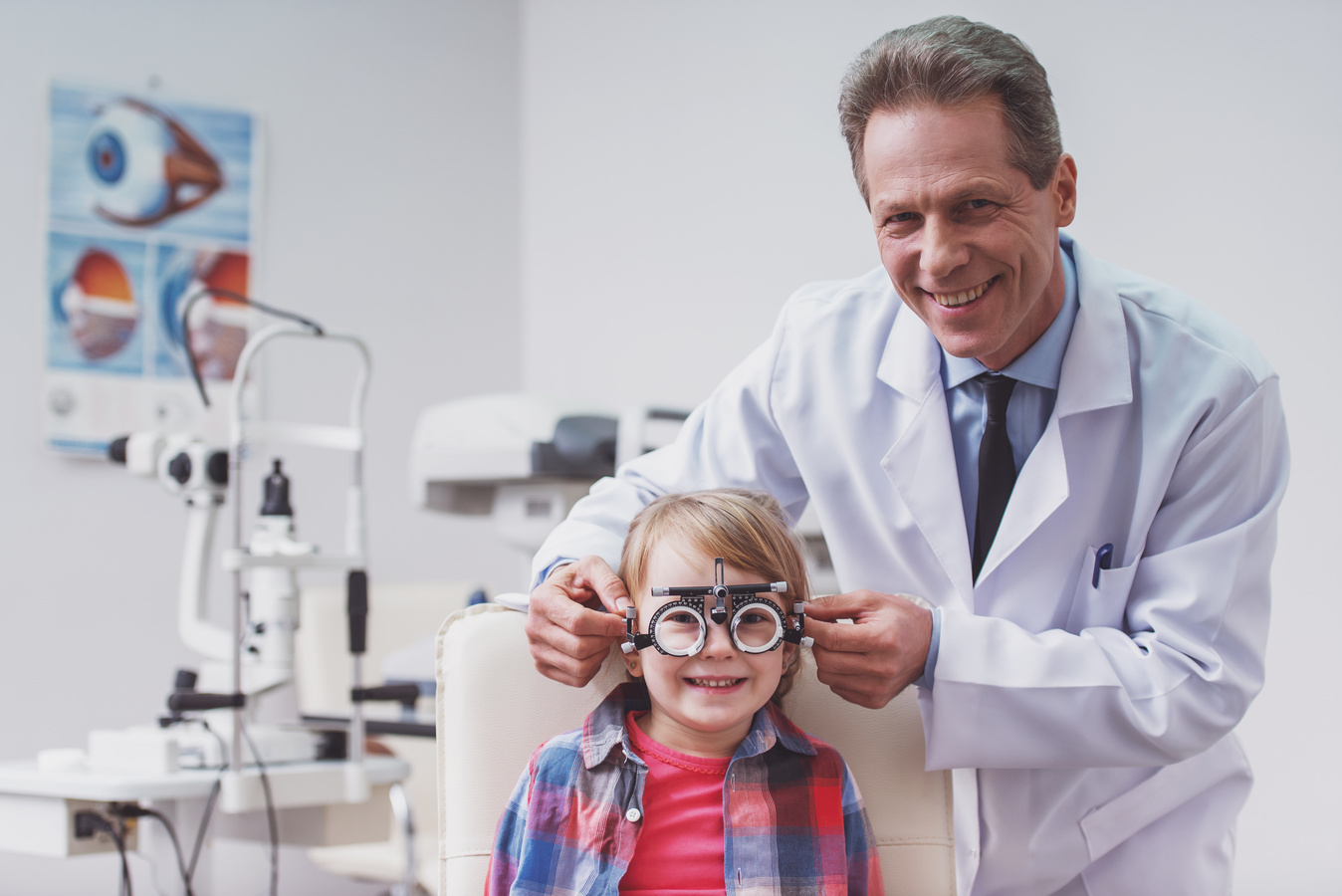
Myopia In The Digital Age: Insights And Recommendations For Eye Care
Myopia, commonly known as nearsightedness, is a refractive error in the eye that makes distant objects appear blurry while close objects can be seen more clearly. This condition occurs when the eyeball is too long or the cornea (the clear front part of the eye) is too curved, causing light rays entering the eye to focus in front of the retina instead of directly on it. As a result, the images of distant objects become unclear.
People with myopia often have no trouble seeing up close but may struggle with activities requiring clear distance vision, such as reading road signs or watching a presentation from afar. Corrective lenses like glasses or contact lenses are commonly used to adjust the way light enters the eye, allowing distant objects to appear sharper and clearer for individuals with myopia. Additionally, refractive surgeries like LASIK can also help reshape the cornea to improve vision for those affected by myopia.
What Causes Myopia?
It is a prevalent condition globally, affecting around 30-40% of the population in the United States and Europe and reaching even higher rates in some East Asian countries.
The exact cause of myopia is multifaceted and involves a combination of genetic, environmental, and lifestyle factors. Researchers believe that the interplay of these factors contributes to the development and progression of myopia.
Genetics plays a significant role in myopia. If one or both parents have myopia, their children are more likely to develop the condition. Multiple genes have been identified to have associations with myopia, suggesting a genetic predisposition to the condition. However, genetics alone cannot explain the recent surge in myopia prevalence, indicating that environmental factors also play a crucial role.
One of the primary environmental factors linked to myopia is excessive near work and prolonged close-up activities, especially during childhood and adolescence. Activities such as reading, using electronic devices, and prolonged screen time may contribute to the development of myopia. It’s believed that extended periods of focusing on nearby objects may lead to abnormal elongation of the eyeball, causing light to focus in front of the retina rather than on it, resulting in blurred distance vision.
Outdoor exposure and natural sunlight have been inversely associated with myopia development. Studies suggest that spending time outdoors, particularly during childhood, may have a protective effect against myopia. The exact mechanism behind this protective effect is not entirely understood but is believed to be related to the intensity and spectrum of natural light.
Other contributing factors to myopia include inadequate lighting, poor reading habits, lack of proper eye care, and certain medical conditions. Additionally, systemic factors like diabetes and certain medications have been linked to an increased risk of myopia.
The prevalence of myopia has been on the rise globally, especially in urbanized and technologically advanced societies where there is a higher prevalence of near work activities and less time spent outdoors. This trend emphasizes the importance of understanding and addressing the various risk factors associated with myopia.
Management and correction of myopia typically involve prescription eyeglasses or contact lenses to compensate for the refractive error. Other options include orthokeratology, where special contact lenses are worn at night to reshape the cornea temporarily, or refractive surgery, such as LASIK, to permanently correct vision.
Myopia is a complex condition influenced by a combination of genetic predisposition, environmental factors like prolonged near work, and lifestyle habits. Understanding these factors is crucial for implementing strategies to prevent or manage myopia effectively. Regular eye examinations and adopting healthy visual habits, including spending time outdoors, are essential in addressing this prevalent vision problem.
Symptoms of Myopia
Recognizing the signs and symptoms of myopia is crucial for early detection and effective management. Common indications include:
Myopia, also known as nearsightedness, is a refractive error that affects vision at a distance. Common symptoms associated with myopia, according to experts, include:
- Blurred vision when looking at distant objects.
- Difficulty seeing clearly while driving, especially road signs.
- Squinting or straining to see distant objects clearly.
- Eye fatigue or headaches, especially after activities requiring focused distance vision (like reading road signs or watching TV from a distance).
- Difficulty seeing clearly in low-light conditions or at night.
- The need to sit closer to the TV or screen to see clearly.
- Eye rubbing or excessive blinking.
It’s essential to consult with an eye care professional for a comprehensive eye examination if you’re experiencing any of these symptoms. This examination can determine the extent of myopia and help in obtaining the appropriate corrective measures, such as glasses, contact lenses, or refractive surgery, to manage the condition.
Diagnosis and Treatment
Myopia diagnosis involves a comprehensive eye examination by an optometrist or ophthalmologist. This examination typically includes visual acuity tests, refraction assessments, and checking the eye’s overall health.
Several treatment options are available to manage myopia:
- Prescription Eyeglasses or Contact Lenses: These correct the refractive error by adjusting how light enters the eye, providing clearer distance vision.
- Orthokeratology (Ortho-K): A non-surgical treatment involving specially designed contact lenses worn overnight to reshape the cornea temporarily. This allows clear vision during the day without the need for glasses or contacts.
- Refractive Surgery: Procedures like LASIK (Laser-Assisted In Situ Keratomileusis) reshape the cornea permanently to correct myopia. This option is typically considered for stable myopia in adults.
Myopia Control
Myopia progression can be managed through various interventions aimed at slowing its advancement:
– Atropine Eye Drops: Low-dose atropine drops have shown effectiveness in slowing myopia progression in children.
– Multifocal Eyeglasses or Contact Lenses: These lenses can help control myopia progression by altering the way light focuses on the retina.
– Outdoor Time: Encouraging children to spend more time outdoors, especially in natural daylight, has been linked to a reduced risk of myopia.
Experts on Myopia
Expert reviews on myopia often revolve around its prevalence, causes, impact on eye health, and available treatments. Here are some key points often highlighted by experts:
- Prevalence: Myopia is a highly prevalent eye condition globally, especially in urban areas and among younger populations. Its prevalence has been increasing, particularly due to factors like increased screen time and less time spent outdoors.
- Causes: Genetics play a significant role in myopia development; however, environmental factors also contribute. Prolonged near work (such as reading or screen use) and limited outdoor time during childhood are linked to an increased risk of myopia.
- Impact on Eye Health: Myopia can lead to various ocular complications if left uncorrected or unmanaged. These complications include an increased risk of cataracts, glaucoma, retinal detachment, and myopic macular degeneration. High myopia (severe nearsightedness) can pose a higher risk of these complications.
- Treatments: Correction of myopia primarily involves eyeglasses or contact lenses to improve vision. Orthokeratology (Ortho-K) and certain types of refractive surgery, such as LASIK, are options for some individuals. Additionally, there is ongoing research into myopia control methods, such as atropine eye drops or specially designed contact lenses like MISIGHT lenses, aimed at slowing its progression, especially in children.
- Preventive Measures: Experts often emphasize the importance of regular eye exams, especially for children, to detect myopia early. Encouraging outdoor activities and limiting screen time, particularly in younger individuals, is considered a potential measure for myopia control.
- Research and Innovation: Ongoing research is focused on understanding the underlying mechanisms of myopia development and finding more effective treatments for both correcting vision and slowing its progression.
It’s important to consult with eye care professionals for personalized advice and appropriate management strategies based on individual needs and severity of myopia.
Finding The Right Solutions For Myopia
The significance of addressing myopia (nearsightedness) with the correct and timely solutions has been emphasized by experts for several reasons:
- Prevention of Progression: Early intervention can help slow down the progression of myopia in children. High myopia increases the risk of eye conditions like retinal detachment, glaucoma, and cataracts in later life. Managing myopia in its early stages can potentially reduce the severity of these complications.
- Education and Development: Myopia can affect a child’s ability to learn and participate fully in the classroom. Addressing it early helps in preventing potential learning difficulties associated with poor vision.
- Quality of Life: Myopia can impact a person’s quality of life, causing inconvenience, discomfort, and limitations in various aspects of life. Timely intervention ensures individuals can lead a more fulfilling life without the constraints imposed by uncorrected vision problems.
- Long-term Eye Health: Managing myopia in its early stages can contribute to better long-term eye health, reducing the risk of serious eye conditions linked to high myopia.
- Psychological Impact: Myopia can affect an individual’s self-esteem, particularly in children and adolescents. Addressing it promptly can alleviate any negative psychological impact related to poor vision.
In summary, early and appropriate management of myopia is crucial for both short-term visual clarity and long-term eye health. Seeking professional guidance and interventions can significantly improve the outcomes and quality of life for individuals affected by myopia.
In A Nutshell
Understanding the causes, recognizing symptoms, and seeking early diagnosis are crucial steps in managing myopia effectively. With advancements in optometric care and treatment options at The Health Eye Group, you can maintain clearer vision and potentially slow the progression of this condition. Regular eye examinations and proactive measures can significantly contribute to managing myopia and preserving optimal eye health.


